Hurricane season is a time of anxiety for many homeowners, especially those living in coastal areas. As someone who has experienced the fear and unpredictability of severe storms, I can’t stress enough the importance of protecting your home. But what if you could safeguard your property while also enhancing its aesthetic appeal? Enter decorative hurricane shutters—a stylish yet functional solution for storm protection. In this comprehensive guide, we will explore everything you need to know about decorative hurricane shutters, from types and benefits to installation and maintenance.
What are Decorative Hurricane Shutters?
Decorative hurricane shutters are specially designed window treatments that not only shield your home from severe weather but also add an element of charm and character to your property. They come in various styles, materials, and colors, allowing homeowners to choose options that match their personal taste and architectural style. Beyond aesthetics, these shutters provide crucial protection against high winds, flying debris, and even harmful UV rays.
The Importance of Hurricane Shutters
When a hurricane approaches, having the right protective measures in place can prevent costly damages and keep your family safe. Hurricane shutters serve as an essential barrier, significantly reducing the risk of shattered windows and water infiltration. With decorative options, you can accomplish well-rounded protection while enhancing curb appeal.
Types of Decorative Hurricane Shutters
Different types of decorative hurricane shutters cater to various needs and preferences. Let’s delve into some of the most popular options:
1. Bahama Shutters
Bahama shutters are hinged at the top and can be propped open to allow light and ventilation. When closed, they provide sturdy protection against storms and can be a charming addition to your home’s exterior.
Pros and Cons of Bahama Shutters
| Pros | Cons |
|---|---|
| Enhances curb appeal | May require maintenance |
| Easy to operate | May not suit all architectural styles |
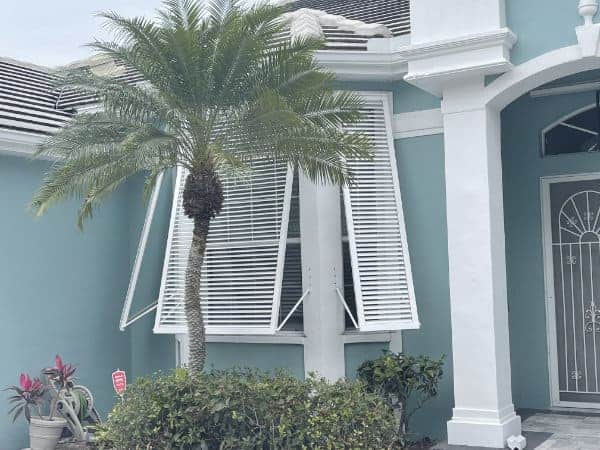
2. Colonial Shutters
Colonial shutters are designed to open and close on hinges, mimicking the classic look of traditional wooden shutters. They offer a robust protective barrier while elevating the aesthetic appeal of your home.
Pros and Cons of Colonial Shutters
| Pros | Cons |
|---|---|
| Classic, timeless design | Can be heavy to operate |
| Provides excellent protection | Requires professional installation |
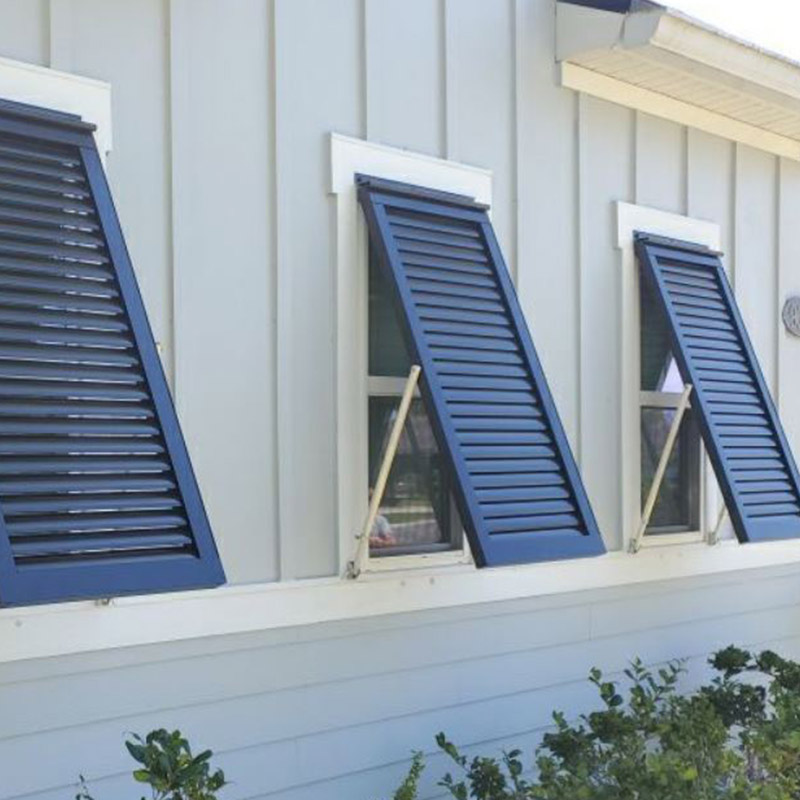
3. Accordion Shutters
Accordion shutters are interlocking panels that can be easily opened and closed. They are a space-saving solution that offers excellent protection. When closed, they can be treated to enhance the exterior look of your home.
Pros and Cons of Accordion Shutters
| Pros | Cons |
|---|---|
| Easy to operate | May not be as visually appealing |
| Space-efficient | Limited color options |
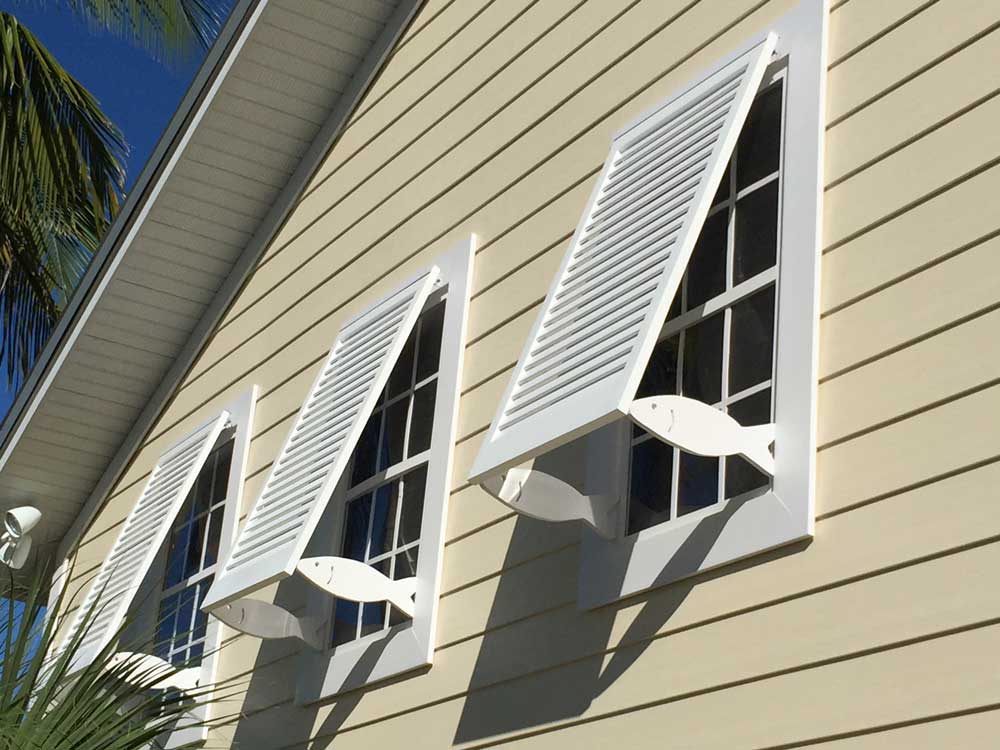
4. Roll-Up Shutters
Roll-up shutters are installed above the window and roll down to provide protection. They offer convenience and can be made from various materials, including aluminum and polycarbonate.
Pros and Cons of Roll-Up Shutters
| Pros | Cons |
|---|---|
| Convenient and easy to store | Can be more expensive |
| Available in various colors and styles | Requires professional installation |

Choosing the Right Decorative Hurricane Shutter
Selecting the perfect decorative hurricane shutter for your home involves various factors, including design, material, functionality, and budget. Here are some guidelines:
1. Assess Your Home’s Architectural Style
Consider the architectural style of your home when choosing shutters. For instance, classic colonial shutters would work well on traditional houses, while modern designs might suit contemporary homes better.
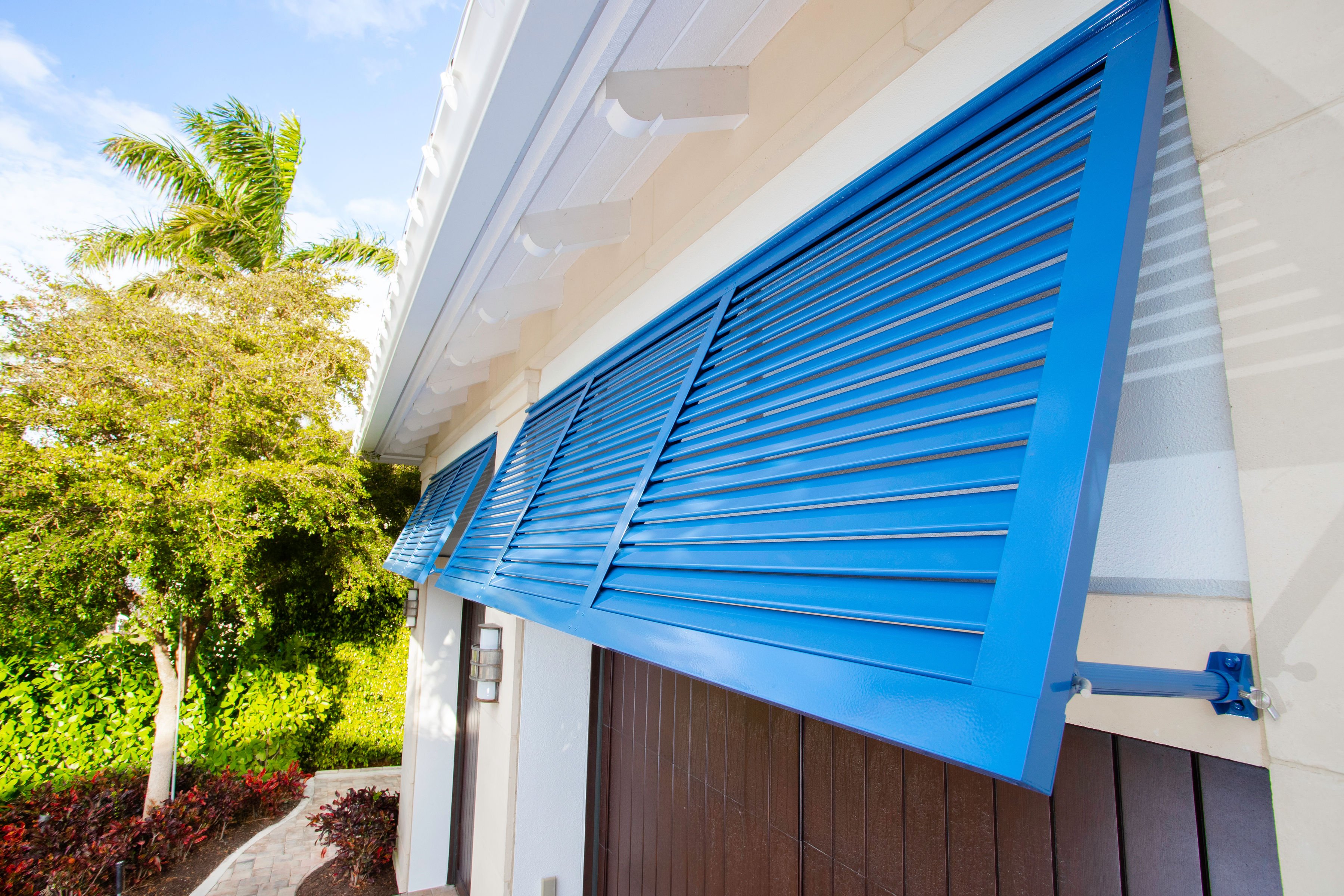
2. Determine Your Budget
Hurricane shutters come at various price points, depending on the type and materials. Be sure to set a budget and stick to it while considering potential installation costs.
3. Evaluate Material Durability
Materials can significantly impact performance and longevity. Common materials include aluminum, vinyl, and fiberglass. Ensure you choose durable options that can withstand extreme weather conditions.
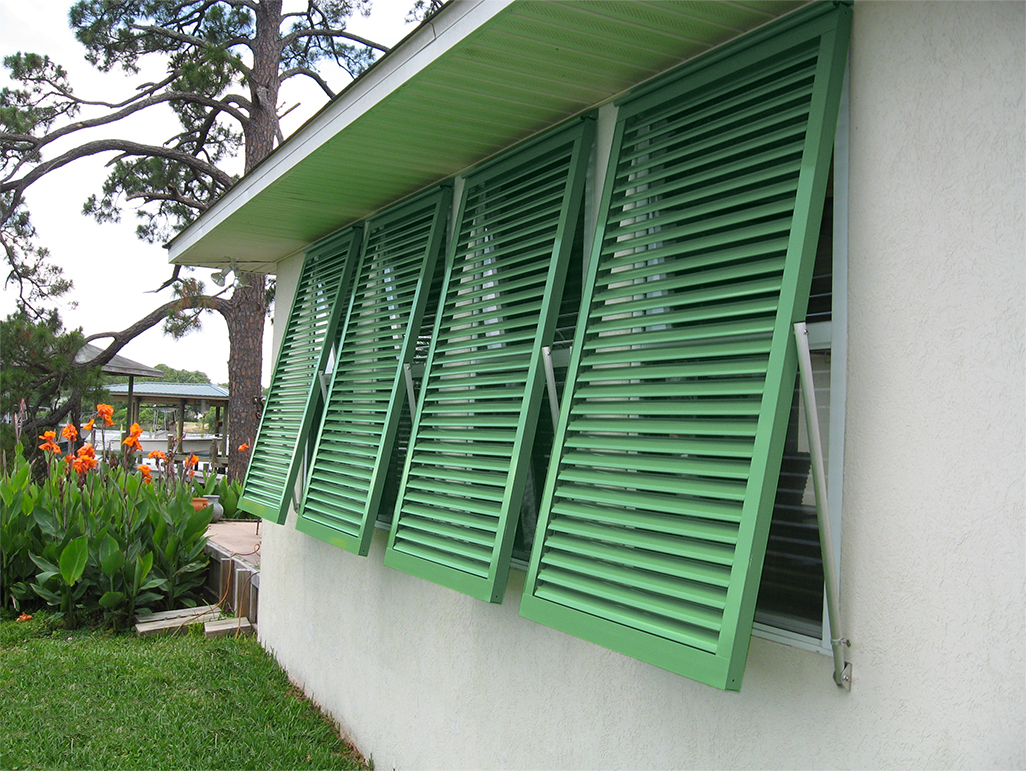
4. Consult with Professionals
Engaging with a contractor or a shutter specialist can provide valuable insights. They can help assess your needs, make recommendations, and ensure proper installation.
Benefits of Decorative Hurricane Shutters
Decorative hurricane shutters offer various benefits beyond aesthetics. Here are some advantages:
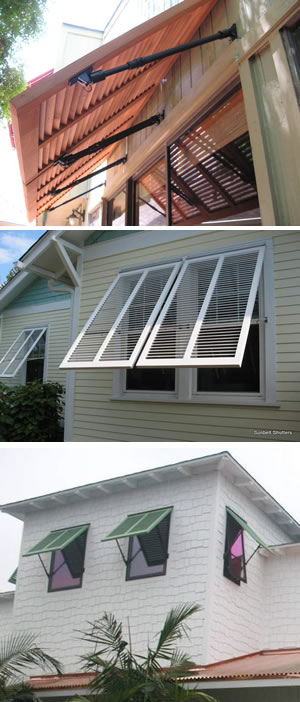
1. Storm Protection
The primary function of hurricane shutters is to protect your home from storm damage. They provide a barrier against flying debris and high winds, reducing the risk of window breakage.
2. Energy Efficiency
Hurricane shutters can improve your home’s energy efficiency. By blocking sunlight during the hottest parts of the day, they help regulate indoor temperatures, reducing reliance on air conditioning.
3. Increased Home Value
Installing high-quality decorative hurricane shutters can enhance your home’s value. A well-protected home is more appealing to buyers, especially in hurricane-prone areas.
4. Aesthetic Appeal
Finally, one of the most notable benefits is the visual appeal. Decorative hurricane shutters come in various designs and colors to complement your home while offering functional benefits.
Installation of Decorative Hurricane Shutters
The installation process for decorative hurricane shutters varies depending on the type chosen. While some homeowners may choose to DIY, professional installation is often recommended. Here’s an overview of the typical installation steps:
1. Measure Your Windows
Accurate measurements are crucial. Ensure to measure the width and height of each window where you plan to install shutters.
2. Choose the Right Style and Color
Pick a style and color that matches your home’s exterior and your personal taste. Some manufacturers offer custom options.
3. Prepare the Area
Before installation, clear the area around your windows. This includes removing any curtains or blinds and ensuring the surface is clean.
4. Install Mounting Hardware
Follow the manufacturer’s instructions to properly install mounting brackets. Ensure they are secure as this is crucial for the shutters’ performance.
5. Attach the Shutters
Once the hardware is installed, carefully attach the shutters. Ensure they open and close smoothly.
6. Test the Operation
Finally, test the shutters to ensure they operate correctly. Make any necessary adjustments as needed.
Maintaining Your Decorative Hurricane Shutters
Proper maintenance ensures the longevity and performance of your decorative hurricane shutters. Here are some tips to keep them in top shape:
1. Regular Cleaning
Regularly clean your shutters to remove dirt and debris. Use a soft brush and mild soap. Avoid abrasive cleaners that may damage the finish.
2. Inspect for Damage
Periodically inspect your shutters for any signs of damage, such as rust or cracks. Address any issues promptly to prevent further deterioration.
3. Lubricate Moving Parts
If your shutters have moving parts, lubricate them as necessary to ensure smooth operation. This is particularly important for accordion and roll-up shutters.
4. Prepare for Storm Season
Before hurricane season, check that your shutters are in good condition. Ensure you have any necessary tools at hand for quick deployment if a storm approaches.
Cost of Decorative Hurricane Shutters
The cost of decorative hurricane shutters varies significantly based on factors like type, material, and installation complexity. Here’s a general breakdown:
| Shutter Type | Cost Estimate (per window) |
|---|---|
| Bahama Shutters | $300 – $700 |
| Colonial Shutters | $400 – $800 |
| Accordion Shutters | $250 – $650 |
| Roll-Up Shutters | $700 – $1,500 |
FAQs About Decorative Hurricane Shutters
1. Do decorative hurricane shutters require permits for installation?
In many areas, permits are required for the installation of exterior fixtures like hurricane shutters. Be sure to check with your local building authority before starting the installation.
2. How long do decorative hurricane shutters last?
With proper maintenance, most hurricane shutters can last between 10 to 30 years, depending on the material and exposure to the elements.
3. Can decorative hurricane shutters be painted?
Generally, it’s advisable to paint only specific types of shutters due to the finish used during manufacturing. If you wish to paint, consult with the manufacturer for recommendations.
4. How do I store my hurricane shutters during off-season?
If your shutters are removable, store them in a cool, dry place to avoid damage. Ensure they are clean and dry before storing.
5. Are decorative hurricane shutters worth the investment?
Absolutely! They provide essential protection during storms while enhancing your home’s aesthetic appeal and potentially increasing its resale value.
Conclusion: A Wise Investment for Your Home
In summary, decorative hurricane shutters are a worthwhile investment for any homeowner living in storm-prone areas. Not only do they offer crucial protection against severe weather, but they also enhance the beauty of your home’s exterior. By understanding the various types available, assessing your needs, and ensuring proper installation and maintenance, you can enjoy peace of mind and add character to your property. As someone who has personally benefited from such installations, I can attest that having your home protected while looking fantastic is truly a winning combination.